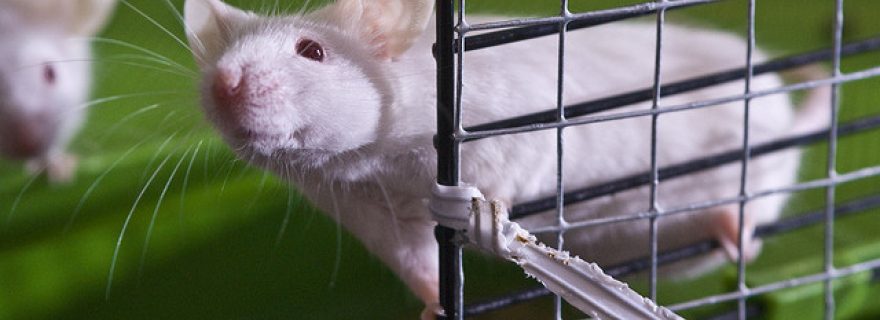Can a mouse use a joystick?
Researchers in New Zealand designed a paradigm in which a mouse used a joystick to get reward. Surprisingly, mice were just as good as humans. How can this give insight in psychiatric disorders such as Parkinson’s Disease and Obsessive-Compulsive Disorder?
“The survival of all animals – from nematodes to humans – largely depends on their ability to act appropriately in their environment” says Simon D. Fisher of Brain Health Research Centre, University of Otago. Every day in our lives, we make choices from many alternatives that are the most appropriate in the current situation, at the current time. In order to understand how people make choices and how they decide to perform an action, several animal models have been used, such as lever pressing or nose-poking tasks. However, these tasks are not appropriate for action selection or action discovery because once they are learnt, a new task or new action is needed to study these processes. That is why the joystick task can be used to overcome the disadvantage of classical tasks in animal research.
Why is the joystick task better?
The other advantage of the joystick task over the traditional lever pressing tasks is that it can be easily used with reward-related paradigms without changing the basic knowledge about how to manipulate the joystick. Thus, with each change in the goal, the new action is discovered, and the subject switches between these actions and selects the correct one to reach the goal.
How it works exactly with the rats?
The researchers developed a self-centering joystick, so whenever the rat releases the stick, it turns back to the center. They used two different types of reinforcement; food and reward. The rats needed to manipulate the joystick to the target zone in order to get the reward. After learning a specific action, the rats needed to switch to another action by manipulating the joystick for a new target to get the same reward.
In order to learn the joystick task, the rats should remember the position of the target (spatial cognition) and perform certain actions to move the joystick (motor coordination). Surprisingly, almost all of the mice learned the joystick task. The researchers stated that the shaping of behavior towards the target requires selection from many complex behaviors to the precise, direct movements, which also requires exploration behavior. So, including behavioral switching, which requires adjustment of the behavior to adapt the changing environment makes the joystick task very similar to ever day actions. Together with its ecological validity, the joystick task allows to investigate the mechanisms of exploration, action selection, flexibly switching between different goals. Thus, it can be utilized to shed light on disorders such as Parkinson’s Disease and Obsessive - Compulsive Disorder, in which people suffer from switching between goals and failure to explore and select the appropriate behavior.
Click here for the original article.


0 Comments